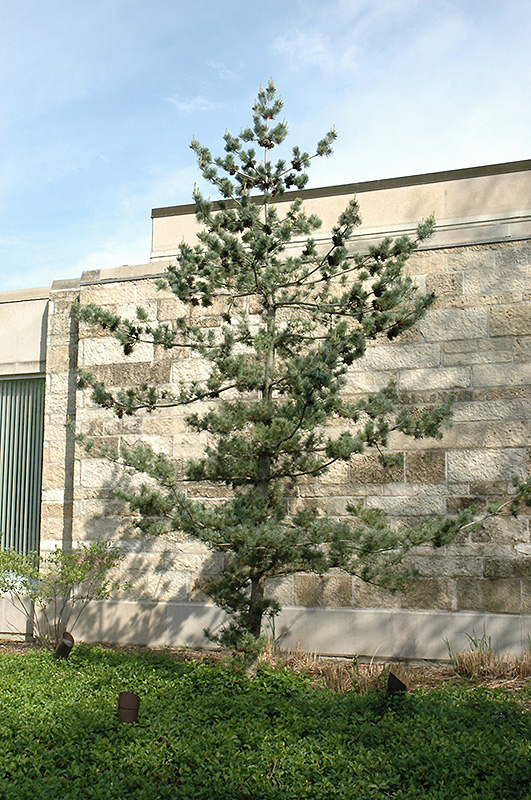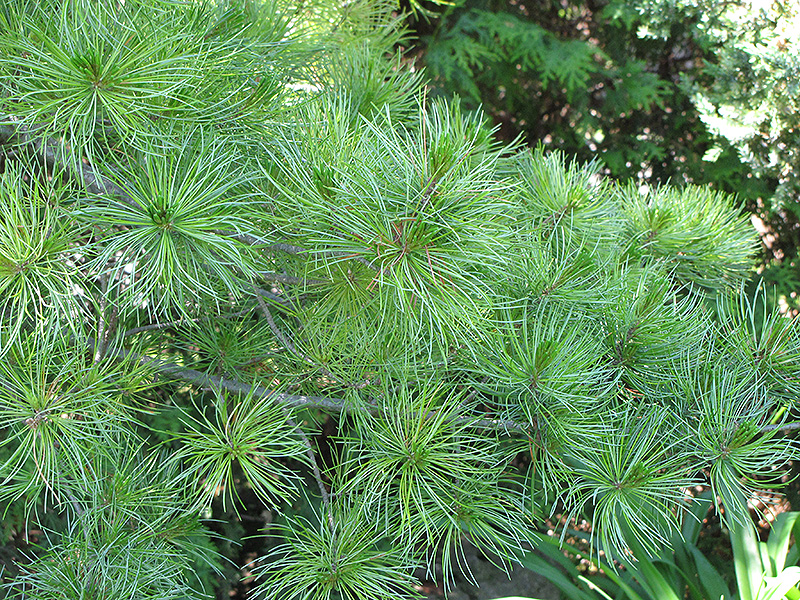Height: 40 feet
Spread: 40 feet
Sunlight:
![]()
Hardiness Zone: 4b
Description:
A majestic and artistic evergreen specimen tree when mature, with broadly spreading branches, yet relatively compact in size for a pine tree, excellent choice for smaller home landscape use, very adaptable
Ornamental Features
Japanese White Pine is primarily valued in the landscape for its ornamental globe-shaped form. It has forest green evergreen foliage. The needles remain forest green throughout the winter.
Landscape Attributes
Japanese White Pine is a dense evergreen tree with a strong central leader and a more or less rounded form. Its average texture blends into the landscape, but can be balanced by one or two finer or coarser trees or shrubs for an effective composition.
This is a relatively low maintenance tree. When pruning is necessary, it is recommended to only trim back the new growth of the current season, other than to remove any dieback. It has no significant negative characteristics.
Japanese White Pine is recommended for the following landscape applications;
- Accent
- Shade
Planting & Growing
Japanese White Pine will grow to be about 40 feet tall at maturity, with a spread of 40 feet. It has a low canopy with a typical clearance of 5 feet from the ground, and should not be planted underneath power lines. It grows at a slow rate, and under ideal conditions can be expected to live to a ripe old age of 120 years or more; think of this as a heritage tree for future generations!
This tree should only be grown in full sunlight. It prefers dry to average moisture levels with very well-drained soil, and will often die in standing water. It is considered to be drought-tolerant, and thus makes an ideal choice for xeriscaping or the moisture-conserving landscape. It is not particular as to soil type or pH, and is able to handle environmental salt. It is somewhat tolerant of urban pollution. This species is not originally from North America.








